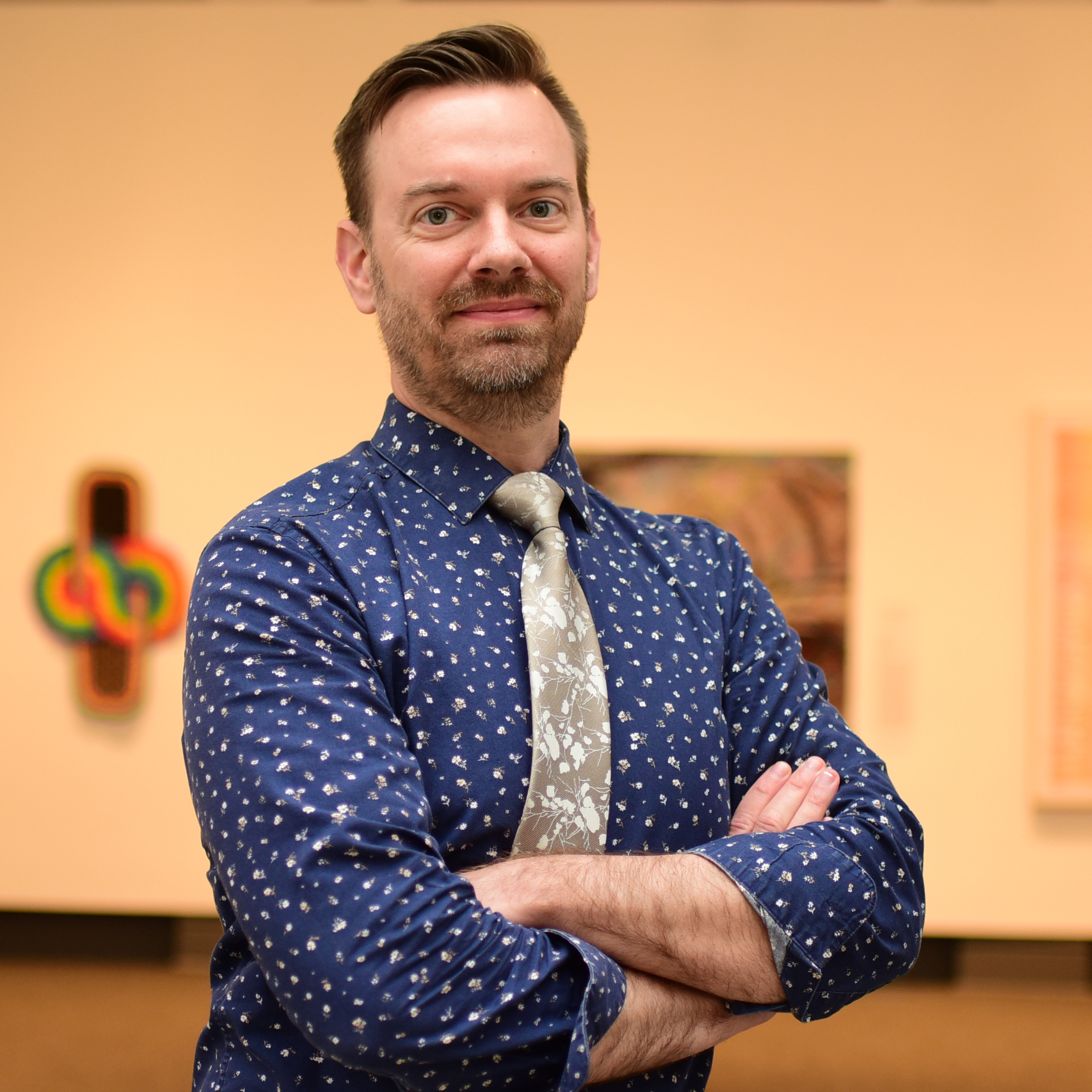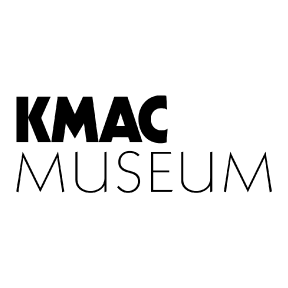
Daniel Pfalzgraf: Q&A
Q&A
with Kevin Warth
Daniel Pfalzgraf (he/him) is an artist, curator, and gallery owner. At the end of last year, he left his role as Curator at the Carnegie Center for Art and History and purchased B. Deemer Gallery in Louisville’s Crescent Hill neighborhood, which will begin operating as WheelHouse Art in the near future. I spoke with him about this transition, his plans for the gallery, Louisville’s art market, and the role of commercial galleries in the art ecosystem.
Kevin Warth: You're someone who's worn just about every hat there is in the art world. To start off, I'd love for you to talk about your background in the arts and journey to where you are today.
Daniel Pfalzgraf: I've always loved making art. I went to Murray State for undergrad, got a BFA in sculpture and drawing, and moved to Atlanta and started showing art in galleries. I worked at a gallery in Atlanta as an art installer and media coordinator, then moved back to Louisville after a few years and worked at the Speed Art Museum as a preparator. I decided to leave the museum world and came back to the gallery world for a while, working at B. Deemer Gallery as a gallery assistant and media coordinator. And I ran the Green Building Gallery for a few years, became an independent curator, then got a job as the curator at the Carnegie Center for Art and History in New Albany. Finally, I left the museum world a second time to come back to the gallery world. Last year, Brenda Deemer called me up and said she was ready to retire and wanted to know if I'd be interested in buying the gallery. So here I am.
KW: In what ways do those experiences inform your new role with WheelHouse Art?
DP: I feel like I have a good sense for the wants and needs of everyone involved in the process of exhibiting, purchasing, and owning artwork. Having all those different experiences allows me to understand the driving motivations for everyone and be able to make connections for mutually beneficial relationships.
KW: That’s such a distinct perspective for a gallerist to have, understanding what goes into both creating art and curating exhibitions.
DP: When I moved back to Louisville, I wanted to work at the Speed Museum. I was over the commercial world and having to show artwork that was commercially viable, while wanting to offer more conceptual work that wasn't driven by sales. But you know, I soon realize that even in the nonprofit world, it's still commercial, they're just selling it a different way. They're still selling artwork. Maybe they have to have Impressionist shows to sell tickets and keep the doors open, just like a gallery needs to sell more accessible artwork in order to stay open. Being a curator, like my role at the Carnegie Center, is basically understanding my audience, what my audience needs, and what I can provide for them. That's not always just providing the easily digestible thing, it’s providing a little bit of challenge to them but not going so far off the rails that there's a disconnection between the audience and the artwork. It's about finding those connections between the art and the audience or collector.
KW: How do you plan to navigate the push and pull between your desire to show challenging work and the need to make sales in a commercially driven space like WheelHouse Art?
DP: It goes back to understanding your audience and knowing their needs. When I was at the Carnegie, we had such a wide audience. It wasn't all people who came with a background in art. It was important to have a high quality of work there on exhibit, but we also had people with very little to no art education or people who didn't care about art whatsoever. And so I had to also be able to show artwork that can make some kind of connections with those audiences. That really sets me up for doing something similar in a gallery setting where we'll have people with all different backgrounds or experiences with art who might be coming in looking for something. I want for people to feel comfortable coming in who have never purchased artwork before or have had little to no experiences with art, but might be interested in having some art in their spaces to begin to grow that relationship with contemporary art.
KW: Would you characterize Louisville’s collectors as coming in with very different viewpoints on art?
DP: There are certain levels of art followers in this market. The biggest group are essentially upper-middle class collectors that have disposable income and large spaces to display artwork. A lot of them can be driven from a design standpoint, working with interior designers and want to make sure that the artwork fits within their environment. We do have some very high-end collectors, very wealthy collectors, who have some extremely nice work in their collections. A lot of times they purchase their work, especially the high end work, other places like Chicago or New York, or go to art fairs. They don't purchase as much here locally. But here at B. Deemer, we've served those people as well by helping them with their custom framing, for example. So I've seen a lot of stuff coming through that obviously wasn't purchased in Louisville. Then we also have younger collectors, people who are just getting started that may purchase things from $50 art sales or are friends with artists on Instagram. So I hope to be able to expand the kind of work that we show to serve all those unique targets within the larger market.
KW: In regards to the more established, wealthier collectors who go out of town to buy work, is there a way for you and other gallerists in the city to redirect their attention back to Louisville artists? How do you capture their interest?
DP: A big problem that a lot of galleries have voiced over the years is that collectors aren't interested in Louisville artists until they've made it big elsewhere, and then they'll go and buy their work when the artist is showing in New York, instead of investing in the artists showing here in Louisville. One thing that I would like to do with this gallery is expand the market for the artists here beyond just Louisville, selling to collectors in New York, Chicago, Atlanta, wherever, and developing those artists and showing the local collectors how much value, how much notoriety these artists are gaining and that will, in turn, hopefully get them interested in starting to invest in artists sooner.
KW: It's interesting that collectors are turning their backs on what's going on immediately around them. There's something to be said about that and the struggles early- to mid-career artists in Louisville face in terms of breaking through, selling work, and making a name for themselves.
DP: Collectors want security, they want a sure thing. When you have collectors who are looking beyond Louisville to buy artwork, they're looking for safer investments. And a lot of artists here need to expand their market beyond Louisville. You're not going to be able to have a career as a successful artist only selling artwork to Louisville collectors. It's just not a big enough market.
So you have to be able to get yourself out there and have a gallery in New York and Chicago and Atlanta and Los Angeles where you have one or two sales a year. It's hard for artists to be able to work on that business and put themselves out there while also maintaining their art practice. But it's important for the collectors that what they're collecting is recognized as something of value beyond Jefferson County. If WheelHouse is able to help these artists get established beyond Louisville, then I think some of those collectors will be looking at what we're doing, who we're showing, and eventually realize that they can invest before those artists make it, which in turn helps those artists get recognition. It's a cyclical kind of relationship.
KW: What do you think has been the biggest challenge for you in your first month as a gallery owner?
DP: Basically, getting everything set up. One thing I'm very fortunate for is my familiarity with the gallery itself, with the employees, with some of the collectors that visit here, and that the business is already open and established. I'm lucky that I'm not starting from scratch. The most difficult part, though, is setting up all the accounts with all the different vendors and suppliers of the framing materials and things like that. I'm also working on getting a new website for the gallery that I hope to launch next month. The hard part for me is not just getting that set up, but working on all that is preventing me from doing things that I really want to do with the gallery. I really want to be able to connect with the clients when they come in and with all the artists that are already here as well as some artists I want to bring in.
KW: Let's look ahead, maybe three years from now, how do you see the gallery evolving under your leadership?
DP: My goal is to greatly expand what we provide for the community, both in terms of art and services. The goal for WheelHouse Art is to be the central hub of all things art related. Beyond representing the current 40 or so artists and doing custom framing, I want to expand what we provide and add new services like marketing, art installation, packing and shipping artwork for people, creating a secondary art market, arts advising, curation outside of the gallery, as well as selling artwork not just in-house, but digitally as well. I want to make it easy and seamless for people to buy and sell art.
KW: Are you planning on either bringing in new artists or changing up the kinds of exhibitions that have historically been put together at B. Deemer? Or will those stay the same to reflect the interests of your current clientele?
DP: Both, really. Brenda Deemer has created a strong gallery. There aren’t many galleries who can say that they've been open for 30 years, that's a huge achievement in and of itself. That is based largely on the relationships she's developed with the artists that she's shown and the clients that have been coming in over the years. So I don't want to do anything to alienate that current client base. However, I want to grow the market. To do that, I have to expand the type of artwork that we show and I will be bringing in new artists.
KW: For many artists and audiences who are Black, Indigenous, and People of Color, the commercial art world has felt alienating. You’ve highlighted Black artists in exhibitions previously, the #BlackArtMatters show at the Carnegie a few years back being a great example. What kind of strategies are you considering to mitigate these challenges and make WheelHouse Art more accessible?
DP: I think it largely comes from paying attention to what's happening outside of your immediate bubble and seeking these artists out. When I was at the Carnegie, I tried to follow along with what is happening in society at large. That's what led to the #BlackArtMatters exhibition in early 2017. I started planning that in late 2015 or early 2016 when the Black Lives Matter movement was really gaining momentum—that was obviously something very important to the collective consciousness of American society. And that was something that I wanted to be in tune with. That show came about because, as I was reading about the movement, there seemed to be a lot of misconceptions about it for people from either side. It's only natural to want to use an art gallery or an art museum as a way of talking about what's socially on our minds, as art is a form of expressive communication. I wanted to do this show and address some issues surrounding the Black Lives Matter movement. The difficulty for me was that I'm not a leader in that movement. I can't direct the conversations, but was able to find artists that were working in that vein and could lead the conversations, then providing a space for their voices. That show really showed the demand for that kind of artwork, that kind of conversation being had in our community. It was huge. We had over 400 people come to the opening reception of that show, which is the biggest of any that I had ever been to at the Carnegie. What I tried to do when I was at the Carnegie was to not make it a one-off experience or just focus on it one time a year in February, but make it a part of our everyday exhibition program. I wanted to make sure that these perspectives, these artists are represented throughout the year in different shows. So that's something I have to continue here at the gallery, making sure I'm offering artwork that brings in different artists and collectors. I have to reach out to broader collectors, where I'm not only marketing to the upper-middle class, white, suburban collector, but other collectors as well, who have not been comfortable coming into some of the traditional gallery or museum spaces.
KW: I'd love to zoom out and think broadly about the role commercial galleries play in Louisville. Are they just the middleman between artists and collectors or can they become something more than that?
DP: By and large, that's traditionally been their role. I've always pictured myself as a professional dot connector, where I see these different points and then making those connections, whether it's connections between artists and themes for curating a group exhibition or making these connections between artists and collectors. In a large part, yeah, it's sort of being a middleman between artists and collectors. But it's more broad than that as well, it’s being able to market these artists, being their champions, getting them exposure beyond the gallery walls at one location. It's about helping clients, educating them about art, and helping them see things that they may not realize. It's like I said, my goal with WheelHouse is to be a central hub for all things art related for this community. A big part of that is connecting artists and collectors, but it's so much more than that.
-
WheelHouse Art is open Tuesday-Friday from 10am-5:30pm and Saturday from 10am-3pm.
Notes:
-
2.6.21
Kevin Warth (he/him) is a Louisville-based artist and art historian whose research emphasizes queer identity, alternate temporalities, and hauntology.

Daniel Pfalzgraf, Photo credit: Jesse Fox. All photos courtesy of Daniel Pfalzgraf.

Exterior of B. Deemer Gallery/WheelHouse Art

Interior of B. Deemer Gallery/WheelHouse Art

Exterior of B. Deemer Gallery/WheelHouse Art
 Installation of #BlackArtMatters at the Carnegie Center for Art and History.
Installation of #BlackArtMatters at the Carnegie Center for Art and History.







